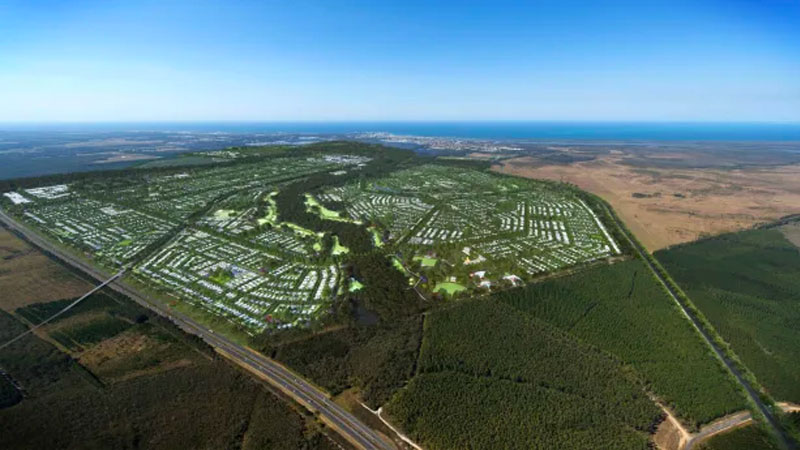Stockland Kicks Off $126m Sunshine Coast Project
Residential developer Stockland has kickstarted construction on a $126 million greenfield project on the Sunshine Coast as south-east Queensland land supply starts to dry up.
The country’s largest developer will press ahead with the delivery of 244 homes within its Thrive Nirimba community, located within its $5 billion Aura masterplanned community in Caloundra.
Stockland’s masterplan for the site, which includes 2,400 hectares of residential community, will see the total delivery 20,000 homes.
Stockland acquired the 3,700 hectare Caloundra Downs site in 2004 as part of its $846 million acquisition of Foster’s Lensworth Group.
Stockland’s general manager at Thrive Lifestyle Communities Kingsley Andrew said the land lease community sector had allowed the developer to further diversity by rebalancing its portfolio and downsizing its exposure to retail property.

Stockland’s new land lease communities model at its Thrive Nirimba community, which actively targets downsizing over-50s, will enable buyers to purchase homes outright void of entry or exit fees, and pay a site rental fee which covers council rates.
“This new product will appeal to those looking to downsize or retire, and is perfect for people who want to enjoy the benefits of resort-style living, but who don’t see themselves living in a traditional retirement village,” Andrew said.
“The cost of entry for a home in one of our Thrive communities will generally be around 20 per cent less than a comparable standalone house in the surrounding catchment.”
Land supply short of critical benchmarks
The announcement comes as affordability and supply in south-east Queensland have been brought into sharp focus in recent months with buyer demand outstripping available land supply.
According to the Urban Development Institute of Australia, land availability has fallen well-below critical benchmarks across some of Queensland’s fastest growing areas, including the Gold Coast, Sunshine Coast, and Redland City.
UDIA chief executive Kirsty Chessher-Brown said servicing land fast enough to keep pace with population growth was a challenge that state government needed to address urgently.
“At the heart of the problem was a major lack of coordination between council planning schemes and the state government’s Regional Plan, as well as red tape, numerous and conflicting zone overlays, and politics.”
“It’s not a straightforward issue and we recognise there are many factors preventing land stocks from reaching the desired levels to comfortably cater for demand,” Chessher-Brown said.

Authorities currently face the challenge of setting policies that will not only help home building tick over in the current downturn, but also keep the sector sustainable in the longer run while not putting too heavy a burden on the public purse.
The state government mandates that every council area should have four years of approved lot supply to ensure that the target of an additional 30,000 dwellings needed per year, every year, are delivered in south east Queensland.
The UDIA said against the benchmark of four years, approved lot supply on the Gold Coast has 1.7 years of supply, the Sunshine Coast 2.4 years, and Redland City 2.5 years.
Brisbane City and Moreton Bay Region are both currently at 3.7 years’ supply.
Nationwide, the housing pipeline has shrunk dramatically, due to mobility restrictions and slumping migration as a result of the Covid-19 pandemic which has tempered demand.
In its statement on monetary policy released on Friday, the Reserve Bank said fiscal and monetary policy measures had helped reboot conditions for detached residential construction, in the near term.
Across September, new home loan commitments rose 5.9 per cent to $22.5 billion, marking the fourth straight month of increase and the highest monthly total since March 2017, when the figure was $22.6 billion.
Building approvals—a key indication of the new housing pipeline—jumped 15.4 per cent to 15,827 in seasonally adjusted terms.
“Survey measures of new orders for detached homes have increased, although sales of greenfield land and new homes have moderated a little following a period of strong demand driven by policy measures,” the RBA said.
“The time limits to qualify for Home Builder have caused some builders to reach capacity for the remainder of the year.”














